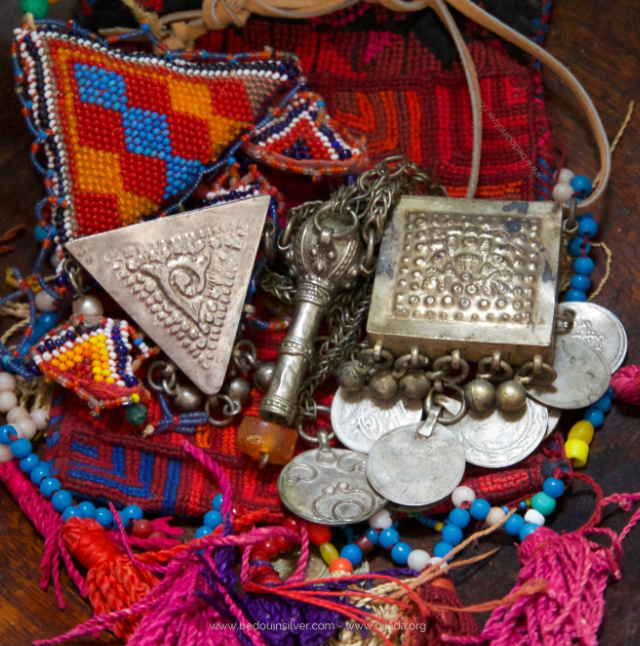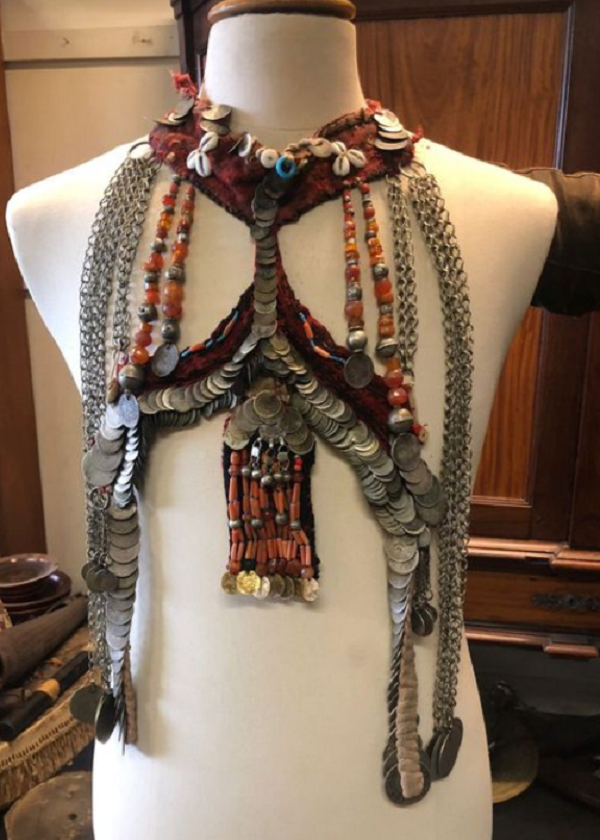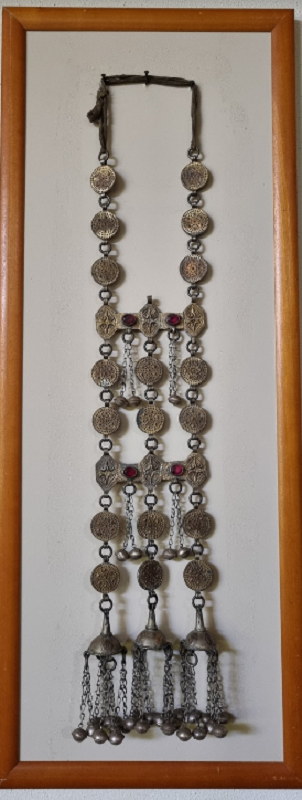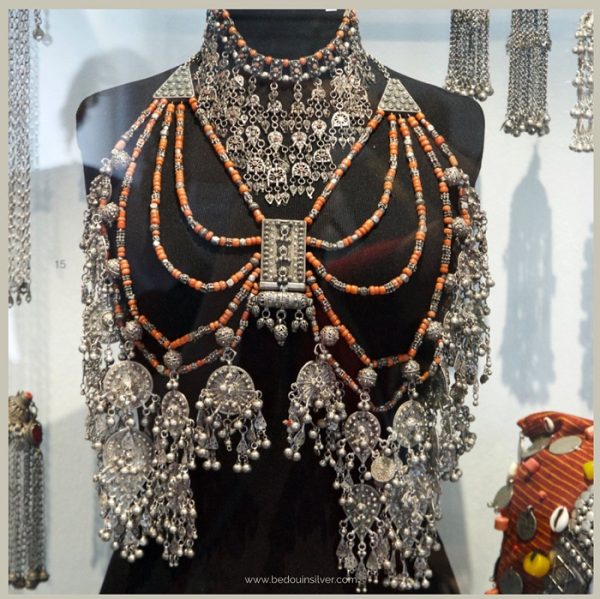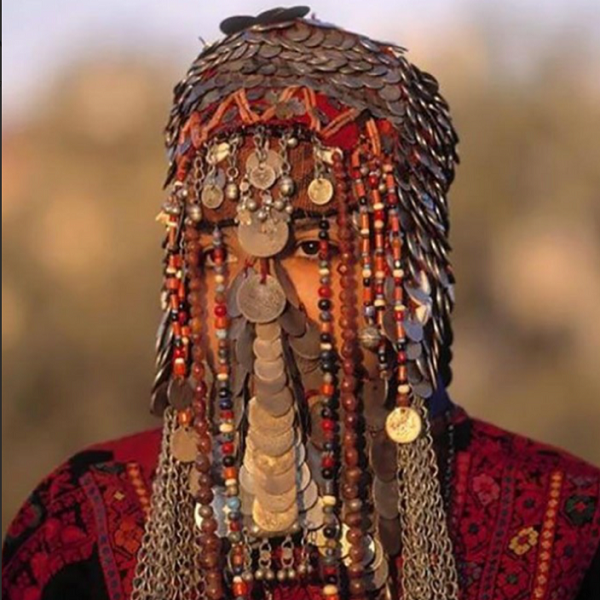This article first appeared on Jewellery Historian, Sigrid van Roode’s, website, Bedouin Silver. We republish it here with her permission as it ties in with our renewed focus on research. She highlights a few important considerations focusing on the importance of collecting and documenting heritage by the current generation – you and us. Sigrid has been a regular contributor to The Zay Initiative blog with her series on Jewellery from the Middle East and Arab world.
To learn more about the history, cultural context, and meaning of jewellery, Sigrid has designed five e-learning courses devoted to traditional jewellery from the Middle East and North Africa. In each course, she shares her insight and reveals the bigger picture behind adornment from the Arab World. Learn more or enrol here.
Endangered Knowledge
Traditional jewellery is disappearing at a fast rate. It is no longer made in the quantities past generations would need, and it is being sold both in the countries of origin as well as in the regions of the world where collectors live. These days, that is not just ‘the West’, but also for example China: amber and coral are bought in bulk by Chinese collectors. But besides the jewellery itself, another valuable asset is disappearing at an even more alarming speed. That is knowledge about what this jewellery actually is – and what it represents.
That loss of insight is for example visible in the flawed identification of pieces of adornment. Sometimes these can be way off the mark, such as the Bedouin face veil shown in the image above. It was offered up for auction as a body ornament/necklace from Turkmenistan (1). The dorsal ornament from Turkmenistan, pictured below as well, was offered as a Saudi jewel. We might have a good laugh about such a mismatch (and I usually do), but the rate at which these appear is indicative of a much more serious matter.
Misidentification
Now you might think ‘Of course these are misidentified, they are being handled by cultural outsiders’ and that would certainly hold true in a number of cases. But incorrect attributions also, and increasingly, occur within the countries of origin themselves. The photograph below shows several splendid Yemeni necklaces – I photographed these in the exhibition Splendour and Shine in the Flow of Time. When I posted this photograph on my Instagram account, I received dozens of messages from Algerian followers insisting this was Algerian. The Turkmen jewellery, which I photographed at the Amsterdam Tribal Jewelry and Textiles Fair, received a lot of attention as well, with many people writing to me these pieces were from Kabylia. These are just a few examples: I receive messages every single day from people who genuinely believe a piece of adornment stems from their culture, even if it hails from another continent, another culture, or another language family entirely.
Misrepresentation
The loss of accurate knowledge also manifests in constructed images presented as reality. Lebanese singer Myriam Fares launched a new music video early in 2022, in which she claimed to dress and perform in Amazigh tradition: the jewels and dress she used in an online dress-up challenge however were random and had very little to do with actual Amazigh adornment. (2) The comments on this particular post range from appreciation to anger: misrepresenting Amazigh culture on a global stage by an Arab performer is adding insult to injury in an already strained dynamic.
Constructed Reality
Being respectful about adornment has much wider implications than just ‘looking the part’: it includes understanding what jewellery actually means. The photograph of the young women, above, is another example of a non-existent, exotic-looking ensemble. Constructed reality in older photographs is a well-known phenomenon, as I addressed in another blog post. It is however still very much alive today, where photos are made specifically to share one narrative or to convey one particular message. There is no such thing as neutral photographs, yet we often accept them as reliable sources of information. When we no longer recognize that a dress is worn the wrong way or mismatched with ornaments that would not belong with it, the power of misinformation that is shaping our worldview will only grow stronger.
The danger of rebranding heritage
You might also think ‘So what? A wrongly attributed piece, what’s the big deal?’. Incorrectly identifying pieces of adornment is not my point here. That happens all the time, and many of those glitches can be avoided with a little more research. My point is that ascribing pieces of heritage to another culture has consequences. In the continuous struggle for identity and acknowledgement that many cultures face, it is imperative to be aware that spreading misinformation is not helping, to say the least. It can even be outright damaging if the misattribution occurs willfully and intentionally – rebranding heritage to fit a new narrative is one of the most vicious ways of erasing the past.
Piece by piece, accurate insights in dress and adornment is diluted further with chunks of misinformation that are repeated over and over again – the Internet is as fast as it is patient. Images are easily copied and shared, with the accompanying background information disappearing and being replaced by brief, and often wrong, captions. With the watering down of conducting proper research to simply ‘Googling’, these nuggets of misinformation continue to be repeated and shared.
The importance of reliable research
The meticulous work of Wafa Ghnaim of Tatreez and Tea is just one example of the time and effort it takes to bring back the detailed meaning of Palestinian tatreez from the brink of oblivion, and there are many more researchers that work tirelessly to ensure not only material culture survives, but its cultural, social, economic, and historic meaning as well. One of the most important factors in this ongoing effort is that the results are shared widely, so they are accessible to people worldwide: the databases of both the Textile Research Centre and the Zay Initiative are just two examples of accessible information.
And we need those efforts more than ever. Because we have now arrived at that point where the transfer of knowledge to the next generation is crucial. If we lose sight of both the details of and the wider world behind adornment, if we let the stories of both wearers and collectors slip through the cracks of time, the remaining jewellery pieces will have lost their voice as a historic source forever.
—
Do you own a collection? Please try and document it as much as possible. Every little note helps! A free guide on how to get started with that is here.
Are you wondering what to do with your collection? Please consider the work of the Qilada Foundation – Sigrid van Roode’s non-profit initiative aimed at repatriating collections and everything they represent to their countries of origin.
References
1) Catawiki lot 59513855, auctioned on June 17th 2022
2) The choreography did, however: this was copied straight from a choreography by Kif-Kif Bledi, a group of performers who are known for their deep study of dance and identity. The contemporary twists they add to traditional dance made the choreography easily identifiable as a creation of Kif-Kif Bledi as shown in this video– the intellectual property dispute is still ongoing.
